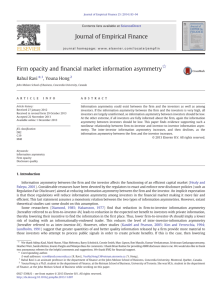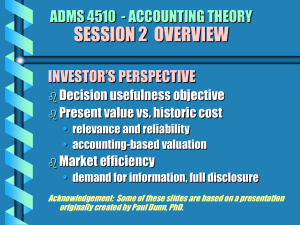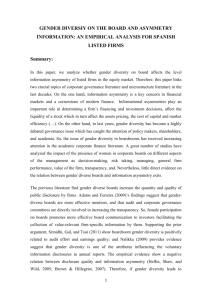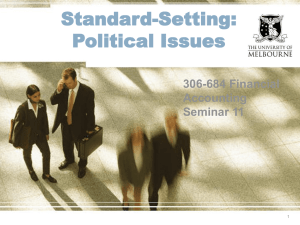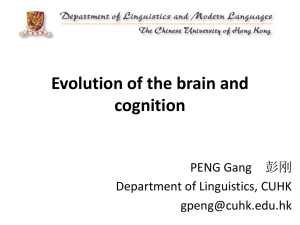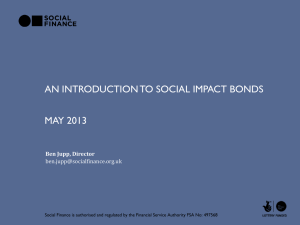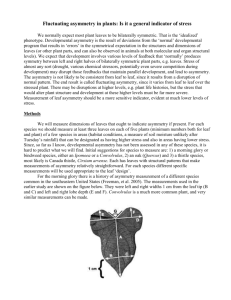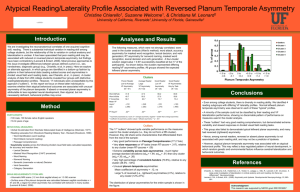Group_E_Chapter_13_Presentation
advertisement
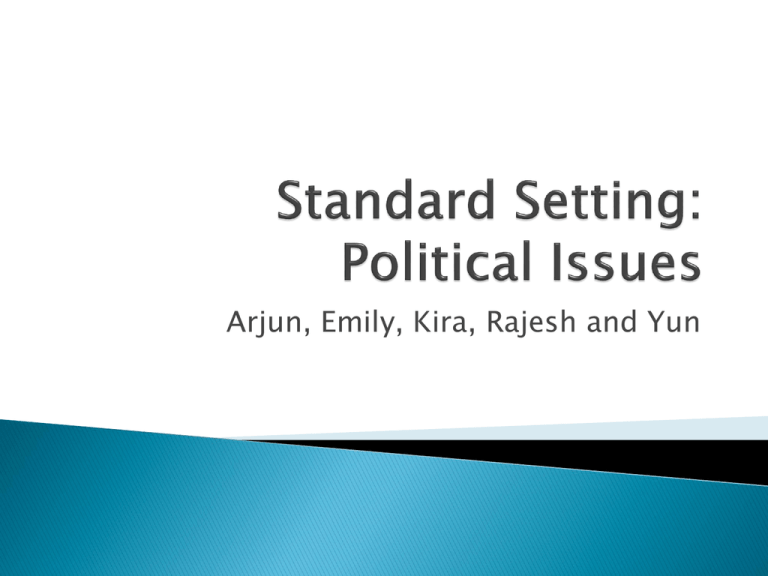
Arjun, Emily, Kira, Rajesh and Yun The problem of market failure is fundamental Information asymmetry which creates the demand for information production by firms also creates a demand for regulation of that information production. ◦ Problem is caused by unanimity 1. The Public Interest Theory 2. The Interest Group Theory Suggests that regulation is a response to public demand for correction of market failures. ◦ The regulator is assumed to have the best interest of society at heart. ◦ Regulation is viewed as a tradeoffs between its costs and its social benefits Problems arise with its implementation 1. Very complex task of deciding on the right amount of regulation (this is particularly true for a commodity like information where it is effectively impossible to please everyone) 2. The other serious problem lies in the motivation of the regulator This theory was introduced by Stigler (1971) ◦ Stigler takes the view that an industry operates in the presence of a number of interest groups ◦ These interest groups are thought of as “demanders of Regulation” Becker(1983) application of Coase Theorem ◦ Coase theorem: If bargaining costs are too high for parties to contract , an appeal to government to step is impossible. ◦ Becker views interest groups as competing for and against regulation The outcome depends on which group is relatively most effective in applying pressure on the regulator ◦ Interest groups are assumed to be rational The theory makes several predictions 1. Creation of standard setting bodies 2. Activities subject to market failure are more likely to be regulated due to demand from groups adversely affected 3. Due process - For example, exposure drafts and board representation Interest Group Theory... But why? ◦ Market forces cannot always be relied upon to generate the right accounting standards and procedures ◦ Complexities resulting from diverse information needs and interest of investors and managers make it effectively impossible for standard setters to calculate the right accounting standards. ◦ Choice of accounting standards is better regarded as a conflict between constituencies ***Interest Group Theory formally recognizes the existence of conflicting constituencies proposed fair value accounting for major classes of financial Instruments Fair value accounting , however has long been opposed by financial institutions, in particular the banking industry. Since financial institutions are heavy users of financial statements, and are crucial to the operation of the economy, the view of this important constituency cannot be ignored In this regard the European Central Bank issued a comment in November 2001 entitled “Fair Value Accounting in the Banking Sector” The Bank Expressed four general concerns: ◦ ◦ ◦ ◦ 1) 2) 3) 4) Short Run, Long Run Reliability of Fair Values for Bank Loans own credit risk Conservatism A further complication of standard setting is the distribution of the benefits of information production among interest groups. Value judgements about who is entitled to property rights arise because individual utilities cannot in general be aggregated into a social preference ordering. That is the two theories are intertwined. Standards should be decision useful, but should also be useful for other parties, such as management. This puts Standard Setters at a conflict situation since it is difficult to determine the right solution to satisfy all parties. There are 4 main criteria: ◦ ◦ ◦ ◦ Decision Usefulness Reduction of Information Asymmetry: Economic Consequences of New Standards The political Aspects of Standard Setting The success of a new standard is judged by its decision usefulness. Difficult to judge beforehand, since market hasn’t had time to respond to the standard. Theory of rational investor decision-making can be used to predict decision usefulness. However, as mentioned earlier, because accounting information is a public good, we cannot be sure that the standard has the greatest decision usefulness will be the best for society. Thus a standard could appear decision useful, yet society would be worse off because the costs of producing that information were not taken into account. Standard setters should be aware of these forces and take advantage of them, however market forces alone are not enough to ensure that the right amount of information is produced. This is due to information asymmetry. Standard setters should use reduction of information asymmetry in capital and labour markets as another criteria for new standards. The public good nature of accounting information helps in reducing information asymmetry. Reduction of information asymmetry improves operations of markets, because it gives investors the perception of a level playing field. One of the costs of a new standard is the cost imposed on firms and managers to meet that standard. There are also indirect costs associated with new standards. The freedom of managers ability to choose from different standards is another economic consequence. Also, some highly competitive industries don’t need additional standards because competition induces better discloser. All these considerations suggest that standard setters should weigh all the possible economic consequences of a new standard. Standard setters must have the ability to come to a consensus strong enough that even a party that doesn’t not like it will have to along with it anyway. The structure and due process of standardsetting bodies is designed to encourage such a consensus. However, if the conflict between parties is severe enough, a party may even appeal to the political process. In conclusion, all these criteria show that the actual process of standard setting is best described by the interest group theory rather than the public interest theory. Textbook comes to a focus on standard setting ◦ Under ideal conditions accounting and reporting standards are not needed ◦ Under ideal conditions one can question whether financial accounting is needed at all ◦ Such conditions do not exist Financial accounting becomes much more challenging. Information asymmetry is a major challenge Two types: 1. Adverse Selection Challenge is to convey information from inside to outside the firm Improve investor decision-making Limit the ability of insiders to exploit their information advantage Enhancing the operation of capital markets 2. Moral Hazard Challenge is to provide an informative measure of managerial performance. enables incentive contracts to motivate manager effort, protect lenders, and inform the managerial labour market Investors need decision-relevant information to help them predict future firm performance ◦ Current Value-Based Information ◦ Generally the best predictors of future values Problems of volatility Possible low reliability Historical Cost Accounting/Conservative Accounting Less subject to problems of measuring manager performance Current value- and historical cost based accounting must be traded off Need for financial reporting to fulfill a dual role of meeting investors’ information needs and the needs of efficient contracting ◦ Creates the fundamental problem of financial accounting theory ◦ Standard setter must then seek a compromise between conflicting interests The structure of standard-setting bodies is designed to facilitate such a compromise The need for international accounting standards will continue to expand Difficulties in standard setting will increase ◦ New constituencies arise representing different levels of economic development, business practices, and cultures Standard-setting bodies, and investors, will have to adapt to take these additional challenges into account. Canada has long been a strong advocate of International Accounting Standards(19661975) Canada was one of the founding member of the International Accounting Standards Committee (1973) CICA’S Accounting Research Committee expressed commitment to IASC to harmonize accounting standards ◦ Minimize differences between the International Accounting Standards and the corresponding recommendations set in the CICA Handbook Canadian vs. United States Standards ◦ Significant issue many Canadian companies have: US patents or investors, as well as significant operations in the US CICA’S Accounting Research Committee expressed commitment to IASC to harmonize accounting standards ◦ Increased globalization of markets increases demand for greater uniformity in the standards Long term objective: Single set of high quality standards that will be internationally accepted Two recommendations: 1. 2. Each of the three standard setters bodies commit to a continuing program of liaison and mutual involvement Standard setter committee be established and initiate and attaining cooperative effort Top 10 major areas in which there were significant differences in standards: ◦ ◦ ◦ ◦ ◦ ◦ ◦ ◦ ◦ ◦ 1) Effects on Changing Prices 2) Business Combination 3) Consolidation and Equity Accounting 4) Foreign- currency translation 5) Income Taxes 6) Earnings per share 7) Post Retirement Benefits 8) Pension Accounting 9) Investments 10) Research and Development Significance changes since 1995 to reduce differences in standards between Canada and US However: differences still remain in the following areas: ◦ Consolidation and Equity Accounting ◦ Investments ◦ Research and Development Costs Canada, Chile, Mexico and US meet annually with the mission to provide the overall quality and comparability of accounting standards To accomplish this mission the committee with need to: ◦ Promote comparability of accounting standards ◦ Consider existing significant areas of difference in standards ◦ Develop recommendation on what specific efforts should be taken to reduced through existing significant differences ◦ Monitor progress towards the elimination of significant differences in standards
